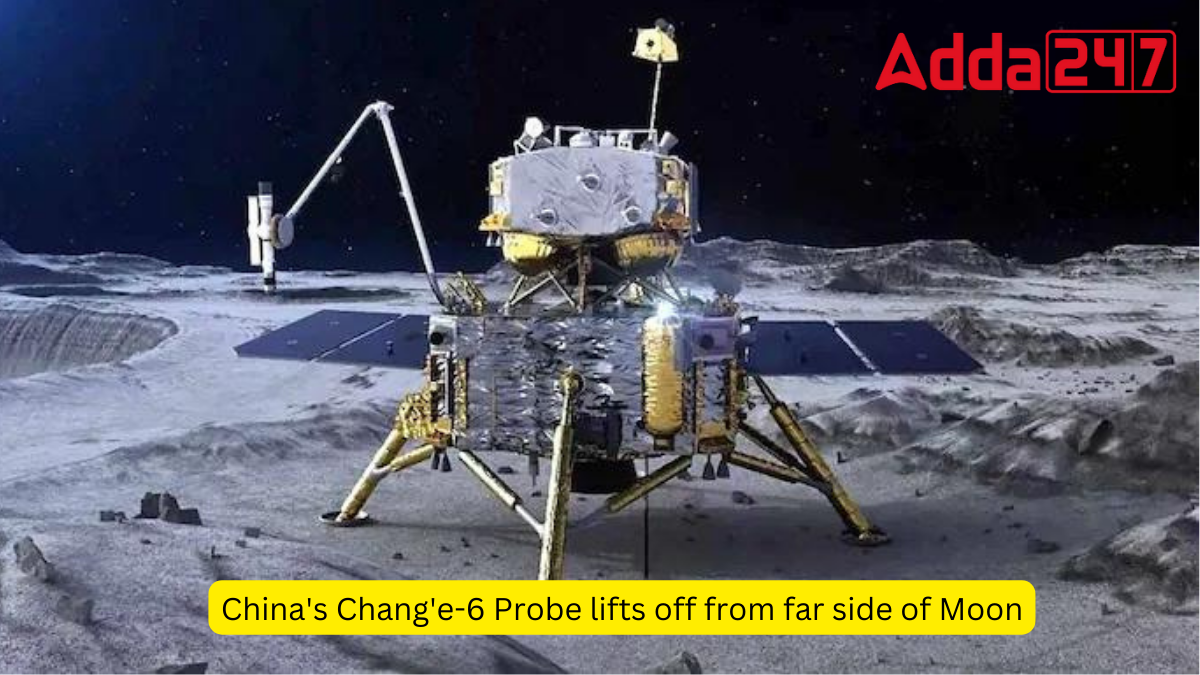China’s space agency announced on 4 June 2024 that BEIJING- China’s Chang’e-6 probe has lifted off from the far side of the moon, starting its journey back towards Earth. China is getting closer to being the first nation to return samples from the far side of the moon, which is always facing away from Earth, thanks to the probe’s successful exit from the moon.
About Moon program
According to Xinhua, the massive impact may have ejected debris from deep below the surface, and as it is the oldest and largest of its kind on the moon, it may reveal the earliest knowledge about it. The program, called Chang’e Moon Exploration after a Chinese moon goddess, comprises six missions. This one is the sixth. It is the second spacecraft intended to return samples, after the Chang’e 5, which succeeded in 2020 from the near side. He also added that the probe’s landing site was the South Pole-Aitken Basin, an impact crater created more than 4 billion years ago that is 13 kilometres (8 miles) deep and has a diameter of 2500 kilometres (1500 miles).
China’s Historic Achievement:
With this historic feat, launching from the moon’s unexplored side, China is on the verge of being the first country to bring back samples from a part of the moon no other country has touched. The moon program is a part of an increasingly competitive landscape that includes Japan, India, and the United States, which is still leading the way in space exploration. China launched its own space station into orbit and sends crews there on a regular basis.
China’s National Space Administration (CNSA) and Space Agency:
According to the China National Space Administration (CNSA), the Chang’e-6 managed to endure high temperatures during its mission on the far side of the moon. The space agency also said that Chang’e-6 “withstood the test of high temperature on the far side of the moon”. The probe is now orbiting the moon and will soon connect with another spacecraft in orbit, said the CNSA. From there, the moon soil samples will be moved to a return module, and travel back to Earth.
Comparison of Chang’e-5 and Chang’e-6 mission:
- Chang’e-6 faced significant technological difficulties because it was required to operate without direct communication with Earth.
- In contrast to the previous Chang’e-5 mission, which collected samples from the moon’s near side. Rather, it communicated via the April-launched Queqiao-2 satellite, which was part of this mission.
- The Chang’e-6 mission gathered soil from the moon’s surface and immediately below it using a drill and a robotic arm, according to reports from the official news agency Xinhua.
- Chang’e-6 also planted China’s National flag on the moon’s far side far the first time. As per reports, the landing is expected to happen in China’s Inner Mongolia region around June 25.
Future strategy of China:
By 2030, the rising global power hopes to have sent a person to the moon, joining the United States as the only other country to have done so. Although the National Aeronautics and Space Administration (NASA) moved the goal date back to 2026 earlier this year, America still intends to land people on the moon for the first time in more than 50 years.



 India’s Deep Ocean Mission Achieves Reco...
India’s Deep Ocean Mission Achieves Reco...
 ISRO Inaugurates Space Laboratory in Rem...
ISRO Inaugurates Space Laboratory in Rem...
 India’s First Animal Stem Cell BioBank I...
India’s First Animal Stem Cell BioBank I...

